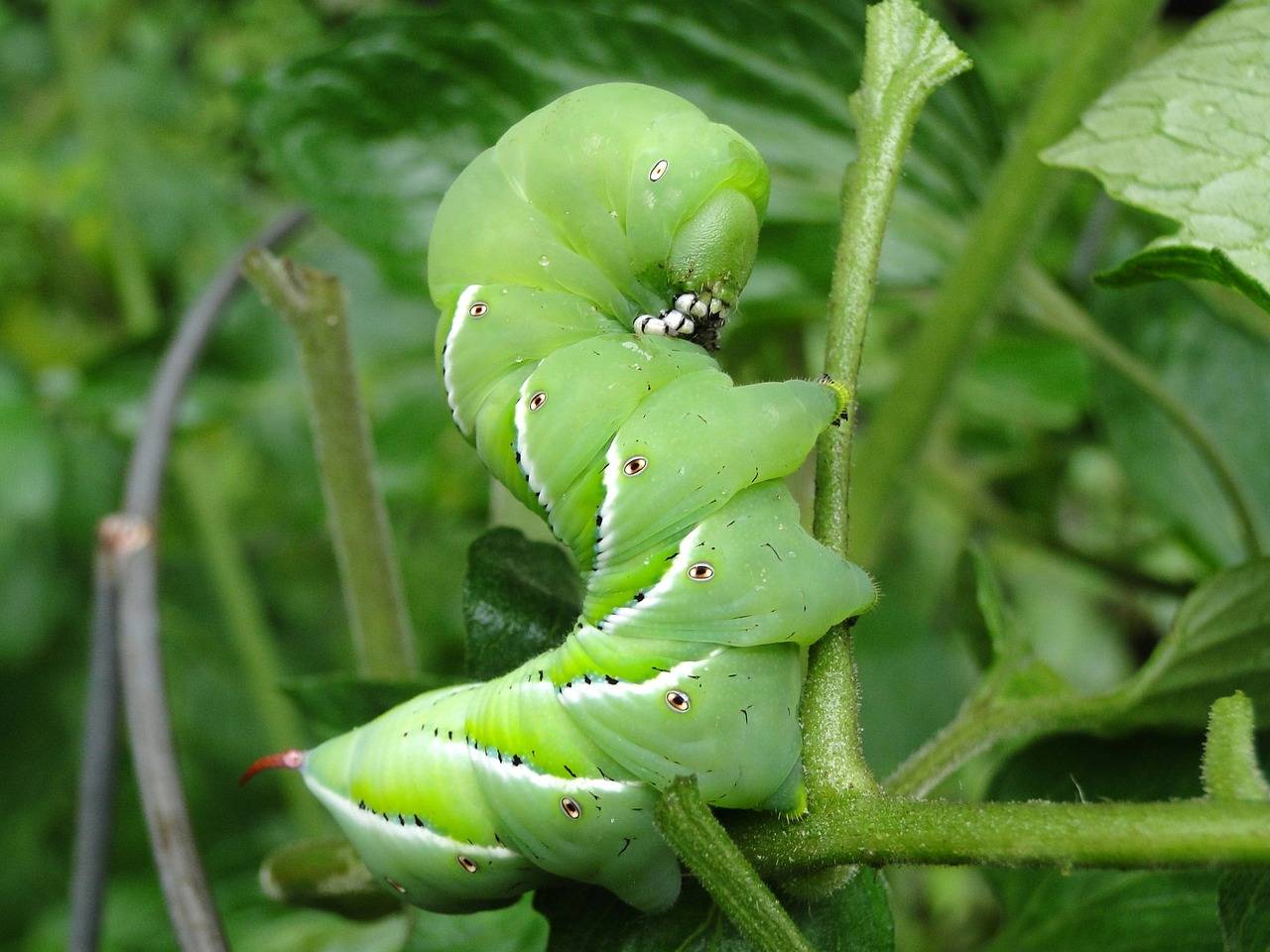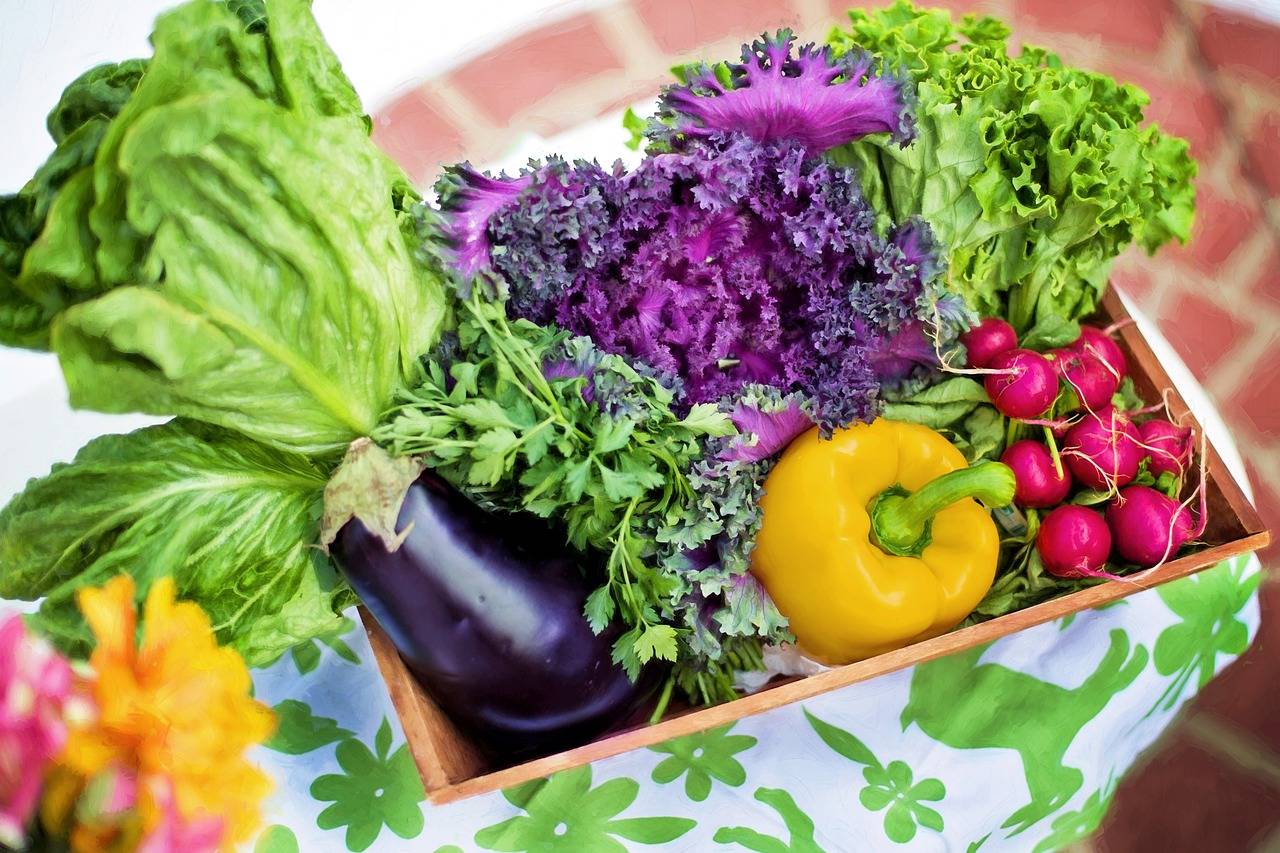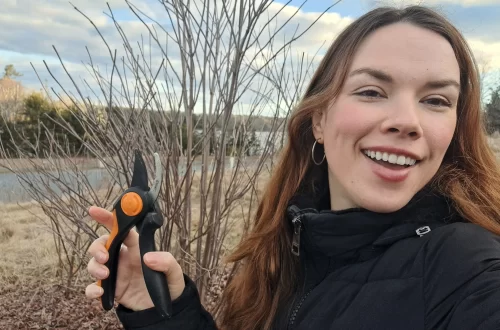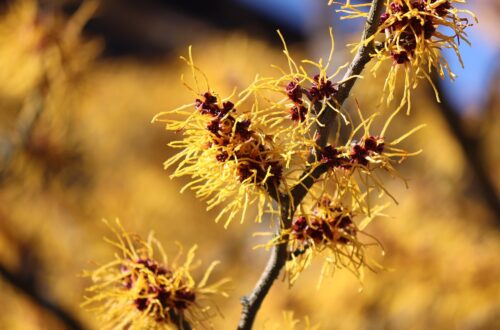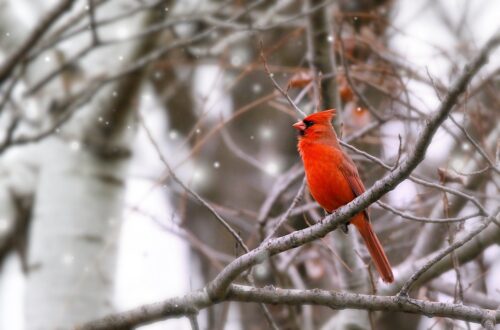Hummingbirds are tiny, aerial acrobats who flit from flower to flower and dazzle garden goers with their iridescent feathers. But beyond their beauty, hummingbirds are top pollinators and they can even gobble up common garden pests, including mosquitos and gnats. That’s why many gardeners want to attract hummingbirds to their gardens, but how do you make a hummingbird garden exactly?
If you’re interested in pollinator gardening in general, we have a full guide on the topic right here. But if you specifically want to grow a hummingbird habitat, the tips below will help. We’ll cover everything you need to know including the best perennial flowers that attract hummingbirds and how to make hummingbird food from scratch!
AFFILIATE DISCLOSURE: AS AN AMAZON ASSOCIATE, I MAY EARN COMMISSIONS FROM QUALIFYING PURCHASES.
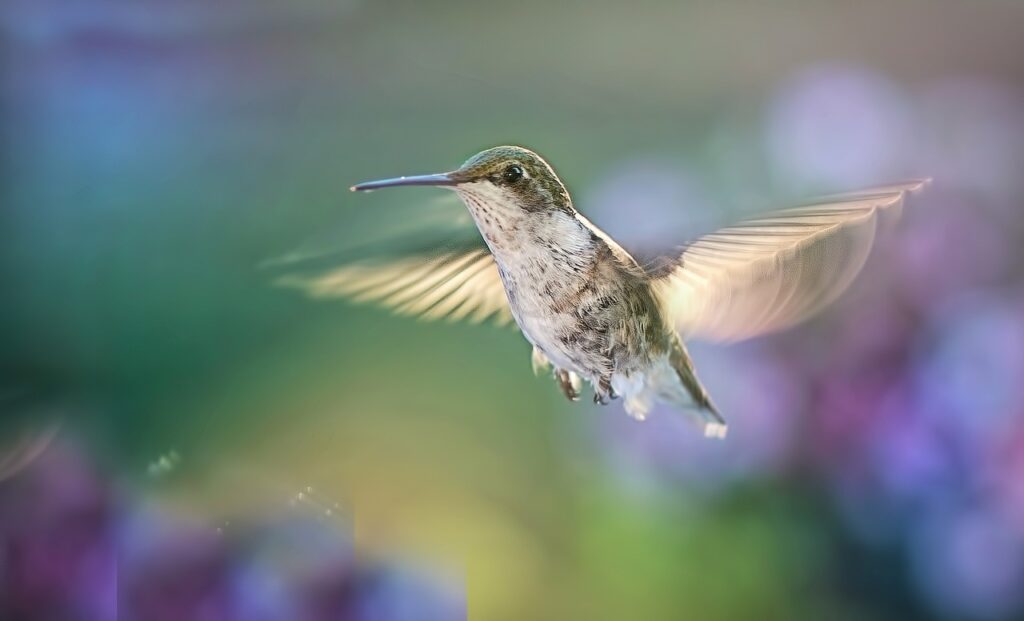
How to make a hummingbird garden
Whether you have a large flower garden or simply a few pots on a sunny balcony, there are plenty of things that you can do to help pollinators and hummingbirds too. Below are some of the most important steps to attract hummingbirds to your space. Depending on the size of your property, you may not have room for all of these elements, but the more you include, the more irresistible your garden will be to hummingbirds!
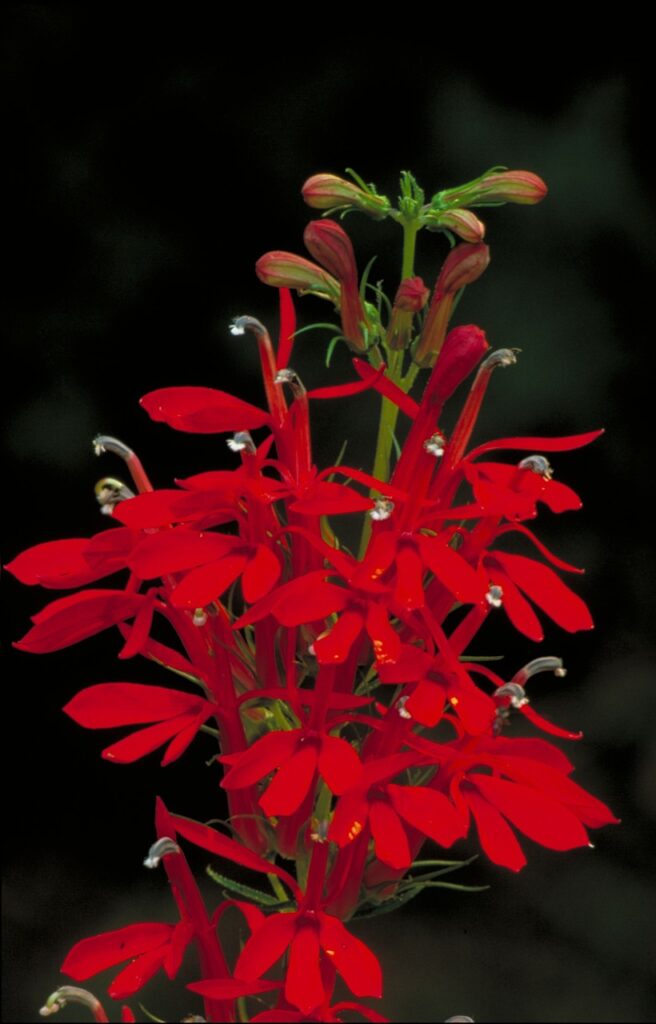
1. Grow native plants.
The first and most important thing to do if you want to create a hummingbird garden is to grow native plants. Native plants are the plants that are naturally found in your local region and they are especially adapted to the pollinators in your area. Compared to non-native species, native plants are much more attractive to pollinators and they’re more likely to draw hummingbirds to your garden as a result.
Beyond that, native species are also perfectly adapted to your local environment. That makes native plants easier to grow and they need less supplemental water and fertilizer than other ornamentals. Plus, native plants are typically more resistant to drought and harsh winters, since they evolved to handle your local weather patterns.
What plants are native to your community will depend on where you live, but some of the most classic native hummingbird garden flowers include:
- Eastern red columbine
- Bee balm
- Cardinal flower
- Coral honeysuckle
- Lupines
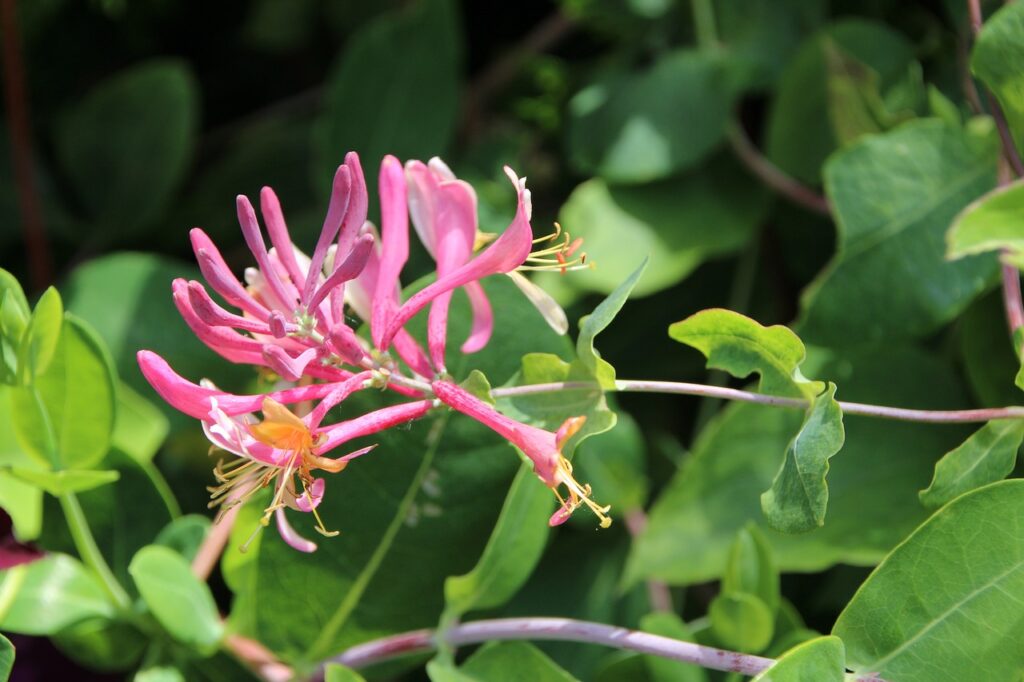
2. Choose the right ornamentals.
Aside from native plants, hummingbirds are drawn to specific plant types and sowing these hummingbird-friendly flowers in your garden will ensure hummingbirds have something tasty to eat when they visit.
Like other pollinators, hummingbirds are drawn to plants that are rich in nectar, but they have a harder time feeding on hybrid or double bloom flowers. That’s why, if you want to grow plants like zinnias for hummingbirds, select varieties with single blooms, which are much easier for hummingbirds to navigate with their beaks.
To cater to hummingbird’s long beaks, long or tubular flowers are top picks as hummingbird garden plants. It’s also a good idea to seek out flowers with bright red blooms, as hummingbirds are most often drawn to the color red. That said, hummingbirds will also forage from other flower colors, including yellow, orange, purple and blue.
While there are certainly other plants that you can grow in your pollinator garden, some of the best plants that attract hummingbirds and butterflies include:
- Trumpet vine*
- Butterfly bush*
- Flowering tobacco
- Verbena
- Daylilies
- Petunias
- Catmint
- Pineapple sage
- Hosta
- Phlox
- Foxglove
- Bleeding hearts
* Some plants can be invasive in some areas, so use caution if you grow these plants in your garden. Keeping plants in pots or growing them on a trellis in the center of your yard can make maintenance mowing easier and keep plants like trumpet vine from spreading as vigorously.
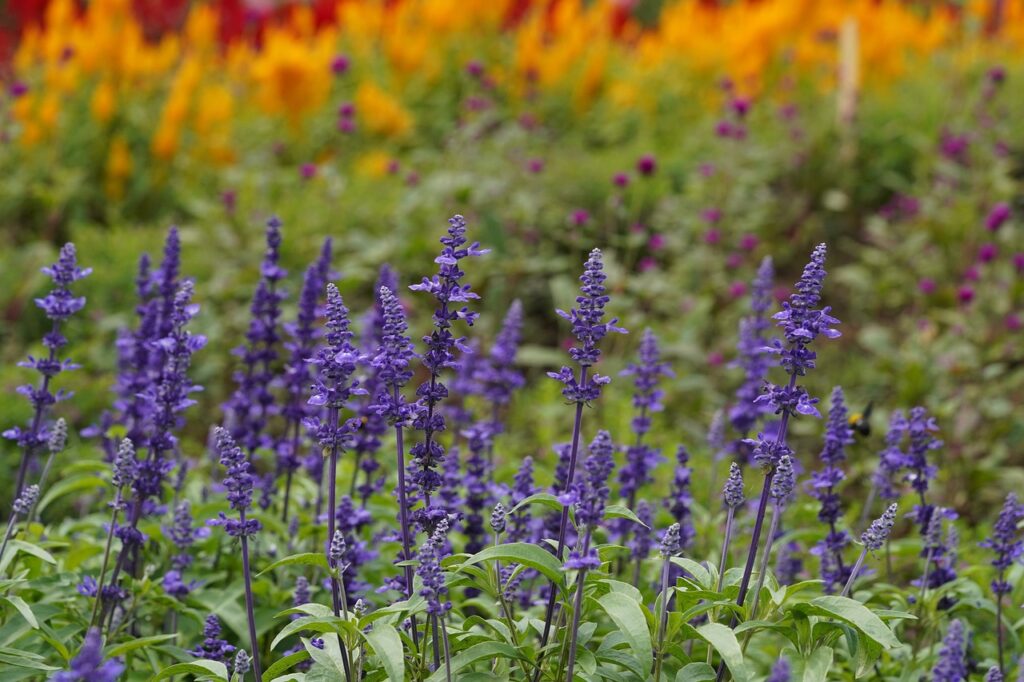
3. Plant in groups.
Pollination is hard work and flying from flower to flower can take a lot out of tiny hummingbirds. But you can make foraging much easier for these pint-sized pollinators by sowing plants together in clusters of at least 3 to 5 plants. This will also make your plants easier for hummingbirds to spot and it will give your planting design a more natural look too!
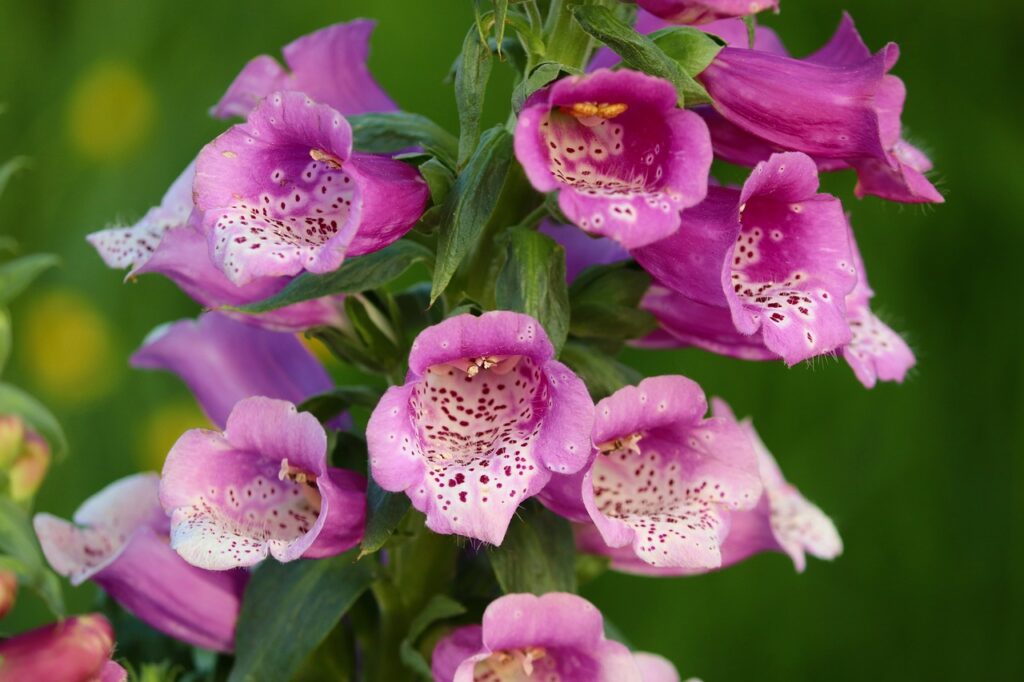
4. Plan for the entire growing season.
Many hummingbirds are migratory species that spend the winter in warm areas like Mexico and Central America and they only head north in spring. When hummingbirds will arrive in your garden can vary from February to May, but hummingbirds usually start heading south in August or September. Making sure that nectar-rich flowers are in bloom when hummingbirds are expected will help these little pollinators during their migration.
The best way to ensure that your garden is ready for hummingbirds is to grow flowers that bloom at different times of the year. After all, spring-blooming hyacinths aren’t much use to hummingbirds in summer, since these flowers won’t be in bloom! Choosing plants that bloom in spring, summer and fall will provide year round support for hummingbirds no matter when they stop by your garden.

5. Add a water feature.
While hummingbirds feed on flower nectar, they also need fresh water to drink. However, standard bird baths are usually too large for hummingbirds to safely drink from and they can sometimes pose a safety hazard for tiny hummers. But there are other ways that you can provide a drinking source for hummingbirds to keep them well hydrated even when the temperatures soar in summer.
One of the easiest ways to provide water for hummingbirds is to fill up a shallow dish, like a terracotta saucer, with fresh water and some clean pebbles and place it near a flowerbed. This mini pool is easy for hummingbirds to drink from, but it can also give bees and other pollinators a safe place to drink as well. Just make sure you clean up the dish and add new water daily for the health of your local pollinators.
If you want an even more irresistible water source for hummingbirds, you can install a solar fountain in your existing bird bath. These little fountains spray a gentle stream of water upwards, making it easy for hummingbirds to get a quick drink.
Another option is to install a garden mister on your hose. Hummingbirds can’t resist playing in the cool mist of these simple systems and it’s always fun to watch them do their aerial acrobatics while they’re getting a drink!
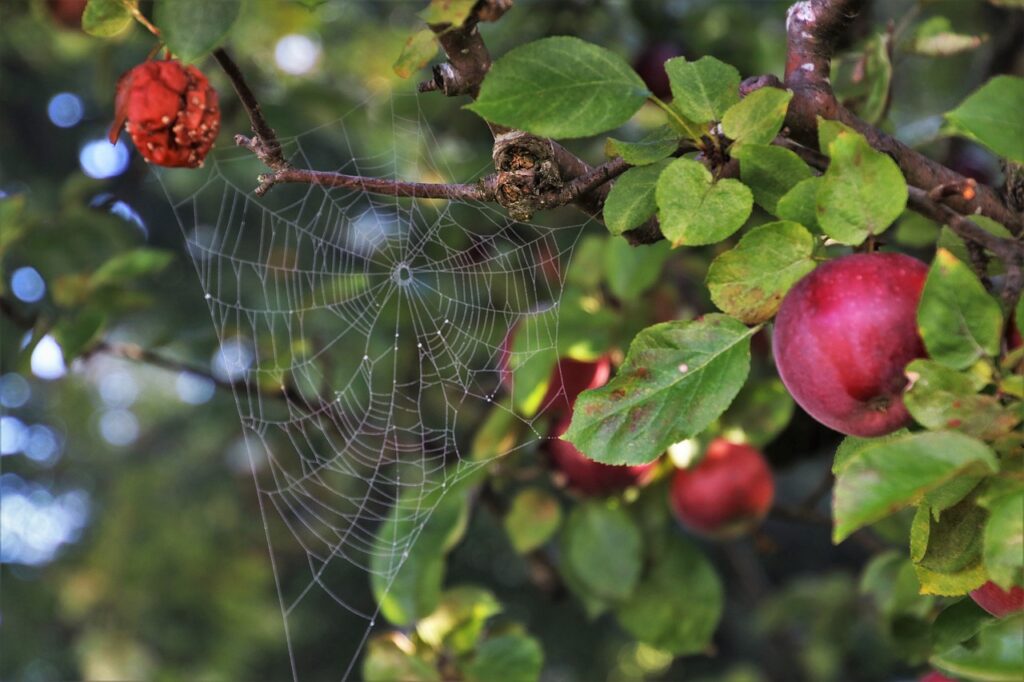
6. Avoid pesticides.
Most people know that hummingbirds drink nectar from flowers, but hummingbirds are actually omnivores that eat insects too! In fact, hummingbirds are efficient aerial hunters and they can feast on a variety of garden insects, including spiders, aphids, mites and beetles.
When pesticides are sprayed in gardens, they can affect a wide variety of insects, but they can also harm hummingbirds and other animals that feed on garden pests. That’s why if you want to help hummingbirds, one of the best things you can do is to choose organic gardening methods whenever possible.
Instead of using pesticides, try out less invasive pest control methods, like companion planting or using floating row covers. If you need to use sprays, opt for natural products like soap sprays made of Castille soap or BT thuricide and never spray products on plants in flower.
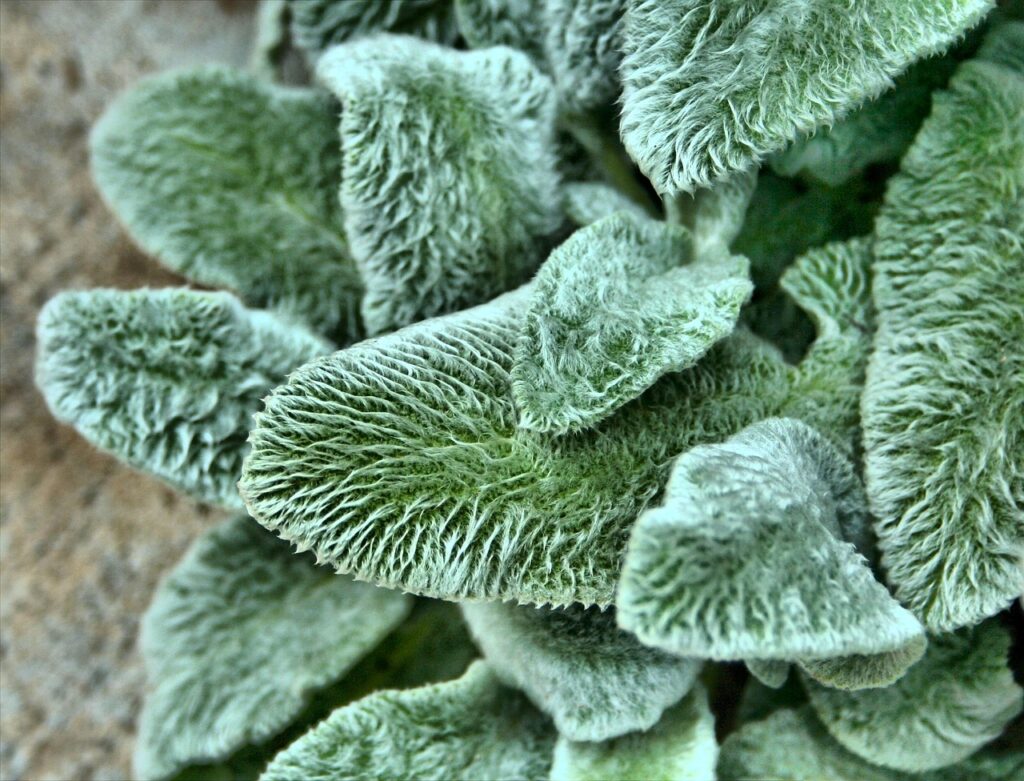
7. Provide nesting materials.
Having hummingbirds stop by your garden is always a delight, but getting hummingbirds to nest in your yard is even more rewarding. While you can never guarantee where hummingbirds will nest, if you want to encourage hummingbirds to stick around your yard, leave natural nesting materials in place when you can.
Hummingbirds build their nests from scavenged items, like lichens and cobwebs. Leaving some spiderwebs in your garden can provide hummingbirds with just the supplies they need for nest building!
On top of that, hummingbirds also love lining their nests with fluffy materials like dandelion fluff or the soft fluff from cattails, milkweed and the leaves of lamb’s ear plants (Stachys byzantina). If you’re lucky, you may already have some or all of these plants growing in your garden, or you can sow these plants intentionally to help out nesting hummingbirds!
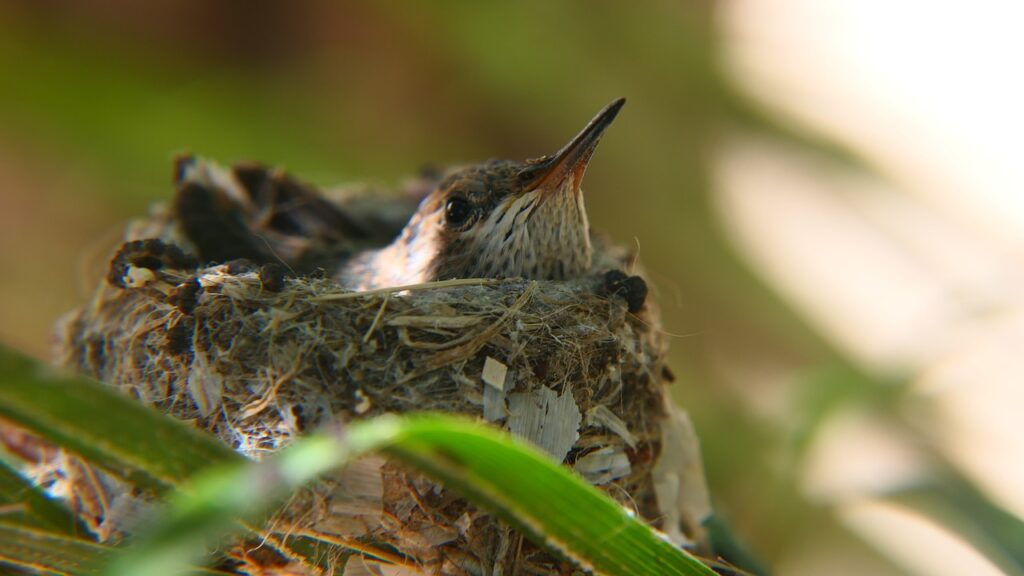
8. Plant trees (or install a perch).
Trees and shrubs provide safe refuge for hummingbirds at night and hummers also build their nests on the horizontal branches of deciduous trees. Growing plants like hackberry, mulberry, oak and birch in your yard will provide natural shelter for hummingbirds and encourage nesting too.
If you don’t have space for full-sized trees, many ornamental trees like maples and cherries also come in dwarf sizes that can be just as useful for hummingbirds. You can also install a small snag or perch for hummingbirds by sinking a sturdy tree branch vertically into the ground near your garden or a hummingbird feeder. This will give hummingbirds a place to rest while foraging and it will provide a space for male hummingbirds to survey their territory.
TIP: Male hummingbirds can be quite territorial! To avoid skirmishes, be sure to install perches or snags at least 20′ apart. If you are using multiple hummingbird feeders, space them out of sight of each other so hummingbirds are less likely to come to feathery blows!
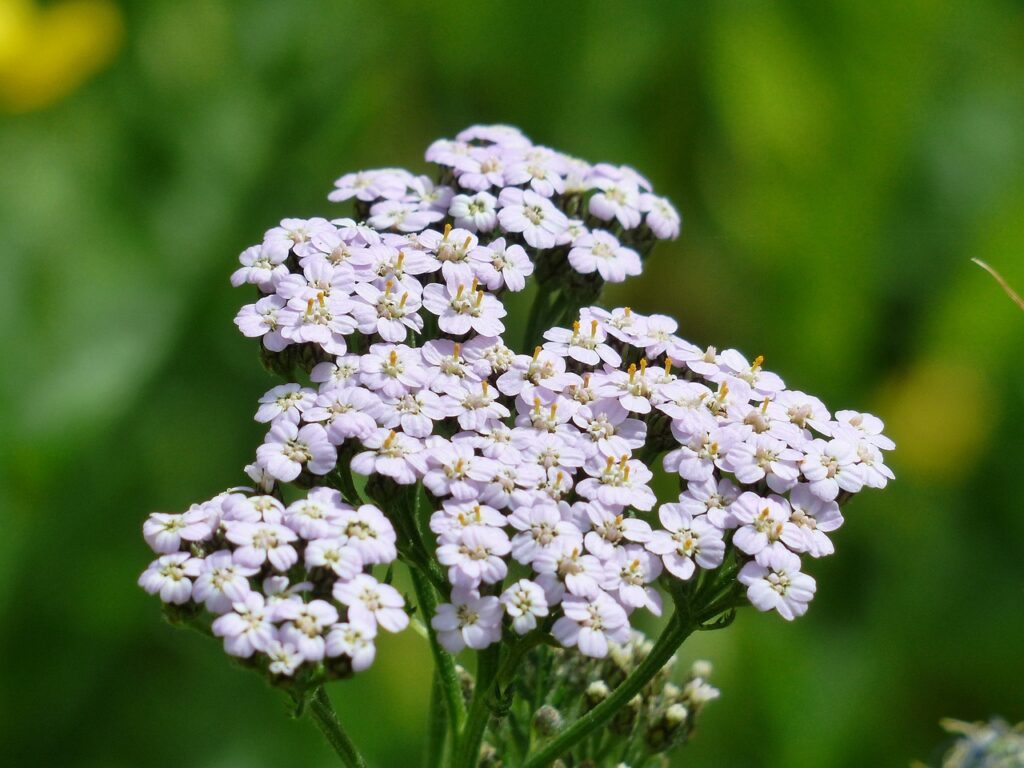
9. Support beneficial insects.
Keeping your garden organic is one way to encourage beneficial insects, which can be a ready food source for insect-eating hummingbirds. But you also increase the activity of small insects in your garden by growing plants like yarrow and flowering herbs like chives, dill and parsley. When in bloom, these plants will lure in flying insects, increasing pollination in your garden and feeding hungry hummingbirds too!
To get the most benefits out of your herbs, allow them to flower. Often, gardeners pull plants like dill up when it begins to bolt; however, bolted dill is still incredibly useful for attracting insects and boosting pollinator activity in vegetable gardens.
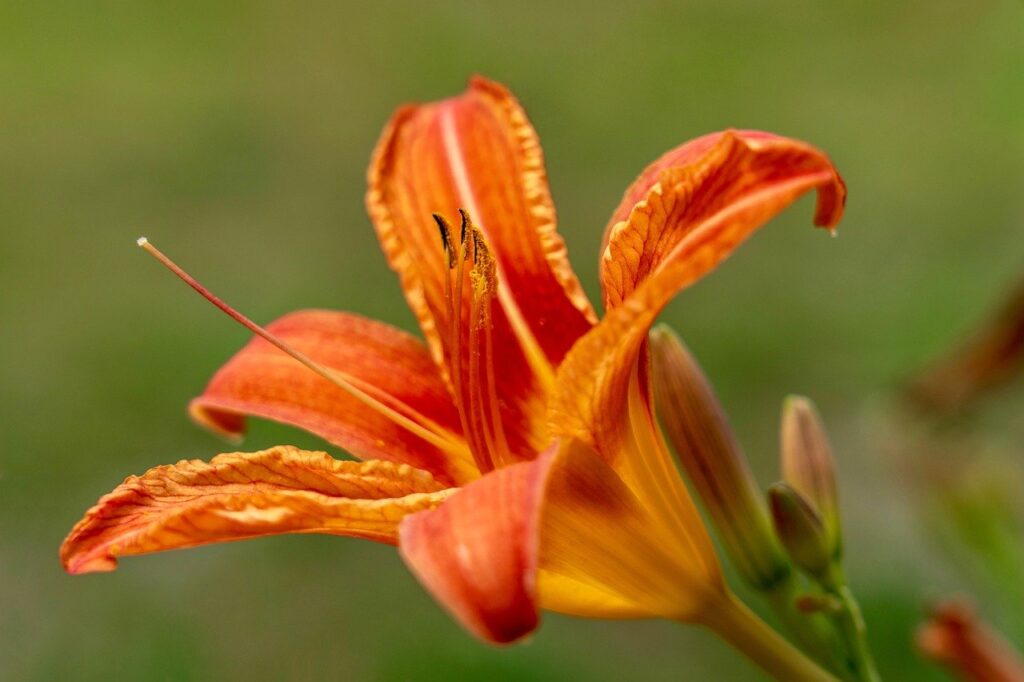
10. Keep your plants happy.
Keeping your flowering plants well-watered and fertilizing them as needed with organic fertilizers, like kelp meal and alfalfa meal will boost the health of your plants and encouraging flowering. Deadheading spent blooms and pruning certain plants can also increase flowering and that’s always a good thing since more flowers means more hummingbirds!
Adding compost is useful for enhancing the growth of your plants, but compost also increases the activity of beneficial insects, which provide an important source of protein for hungry hummers!
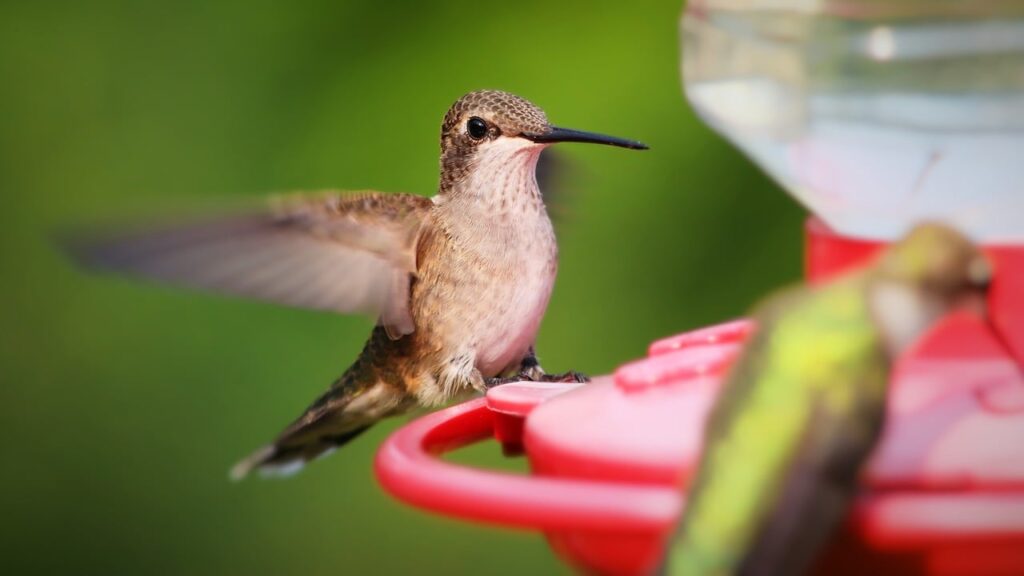
11. Hang a hummingbird feeder.
Of course, no hummingbird garden is complete without a hummingbird feeder or two. The beauty of hummingbird feeders is that they can fit in just about anywhere and they’re so small they can even be included in urban gardens and balcony spaces. So even if you don’t have the space for a full-fledged hummingbird habitat, you can always hang up a feeder and wait for hummingbirds to arrive.
Today, there are lots of hummingbird feeders to choose from, including attractive, handblown glass feeders and super handy window-mounted feeders. Feeders with lots of bold orange and red coloration will stand out best and attract the most hummingbird activity. You’ll also get more hummingbird visitors if you hang your feeder in a highly visible spot in your yard or patio.
For safety, you’ll want to refresh your hummingbird feeders at least twice a week by giving them a good rinse and refilling the nectar. Feeders should be hung out of direct sun and they may need to be freshened up more regularly if the liquid gets cloudy or if the weather is very hot. When refilling your feeders, avoid hummingbird nectar with added red dye as it isn’t necessary and it may be less healthy for hummers.
If you want to make your own DIY simple hummingbird nectar, slowly boil 4 cups of water with 1 cup of refined, white sugar. Stir the concoction as it boils to prevent burning. When the sugar is completely dissolved allow the mixture to cool before adding it to your feeders.
TIP: For even more hummingbirds, you can also install an insect feeder, which will attract small gnats and other insects for hummingbirds to feed on. Another option is to place some cut fruit (like bananas and oranges) on a shallow dish in your garden to attract insects for your hummingbirds. An added bonus is that butterflies are often drawn in by these setups, adding even more beauty and pollinator activity to your space!

